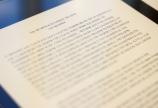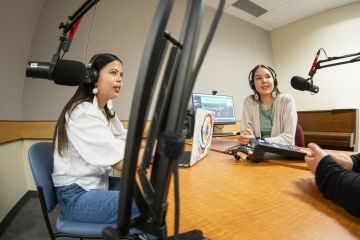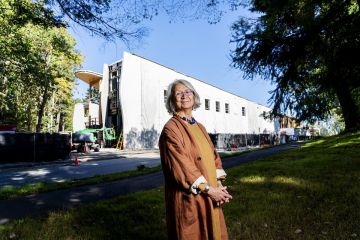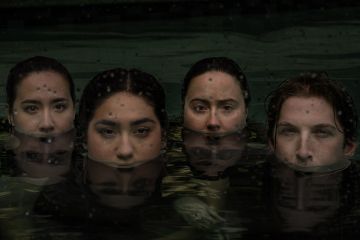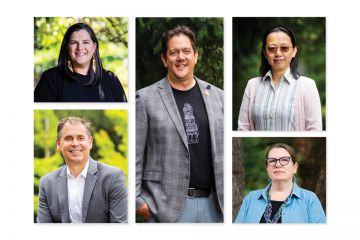Reflections on National Indigenous Languages Day lay path of learning into the future
Social Sciences, Education, Humanities, Continuing Studies, Fine Arts
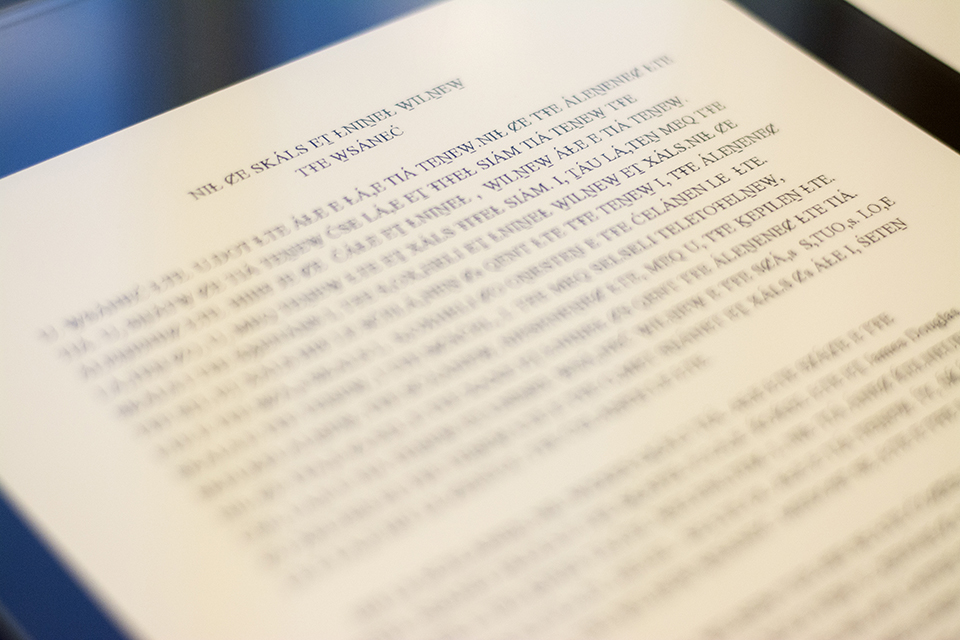
It is the UN International Decade of Indigenous Languages (2022-32). And this month, it is also National Indigenous Languages Day, first marked on March 31 in 1993.
There are more than 70 Indigenous languages across 12 language families in Canada. And they represent countless generations of accumulated traditional knowledge and ways of knowing and being.
As an Indigenous person who was systematically denied the opportunity to grow up with my language, I cannot stress enough the importance of National Indigenous Languages Day. In our communities I always hear the Elders talk about how concerned they are about language and the need to prioritize language revitalization. On this day, I hope everyone stops and reflects on languages. For Indigenous people, through Canadian policies and practices such as residential schools and child welfare, speaking Indigenous languages was intentionally forbidden. Post-secondary institutes now need to provide as many opportunities as we can to revitalize languages and intentionally create opportunities to learn them.
—Qwul'sih'yah'maht Robina Thomas, Vice President Indigenous
There’s much hope for the future with the increase of language learners within every new generation. The latest results from the First Peoples’ Cultural Council (FPCC), a provincial Crown Corporation formed in 1990 on W̱SÁNEĆ territory, show a more than 20% growth in First Nations language learners since 2018.
On Feb. 21, 2023, the same day as International Mother Language Day, the FPCC released the fourth edition of its highly influential report on the status of languages in this province, the Report on the Status of B.C. First Nations Languages.
Five decades and counting
Beginning in the 1970s, UVic has been a leader in post-secondary Indigenous language revitalization in this country and has supported local and national language revitalization efforts in collaboration with Indigenous organizations, Elders, community-based researchers, community language experts and educators.
To mark National Indigenous Languages Day on March 31, we’re sharing this compilation of stories and information about Indigenous language revitalization at UVic.
Belinda Daniels, in the flow
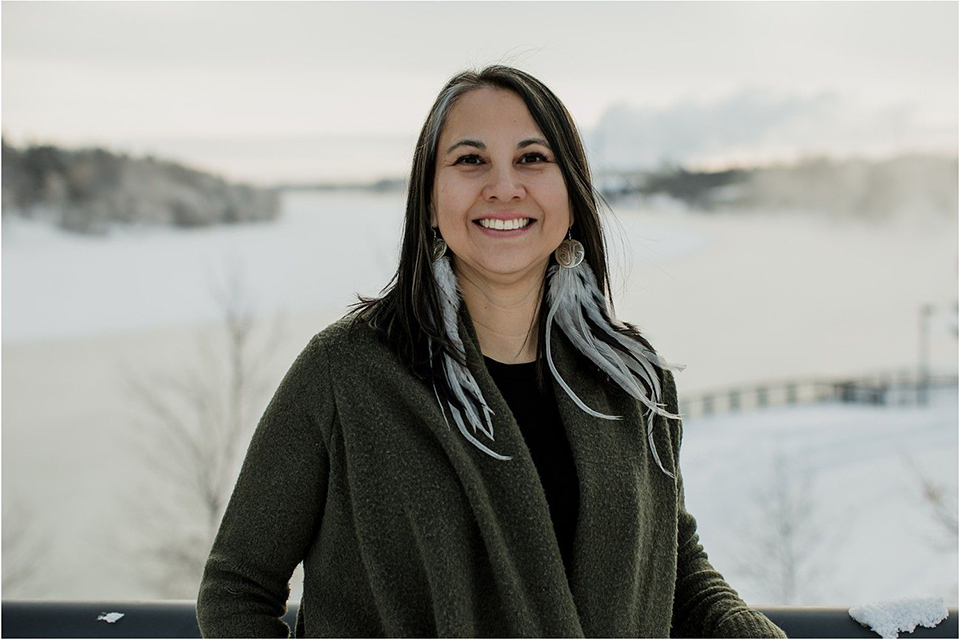
Belinda kakiyosēw (pronunciation: KAH-GUY-YO-SEE-YO) Daniels is a member of Sturgeon Lake First Nation, SK. She grew up hearing nēhiyawēwin Cree spoken but was not encouraged to speak the language. The nêhiyawêwin language spirit came to her in a childhood dream and chose her to work in the field of Indigenous Language Revitalization (ILR), or as she puts it – “languages standing up for themselves”.
Belinda is now a celebrated educator, collaborative researcher and community leader. She teaches ILR as an assistant professor in the Faculty of Education and leads the nēhiyawak language experience, a non-profit organization that offers immersive, land-based language learning camps on Treaty 6 territory.
After learning and teaching Cree grammar in classroom settings for years, Belinda became uninspired by the western curriculum. Intuitively, she began exploring ways of unlearning and unraveling western ways of thinking. This pushed her toward the idea of going back to the land; learning the Cree language from Cree people, on Cree territories. In 2003, she started planning for her first language camp.
Twenty years later, her purpose has become passing on knowledge and regenerating Indigenous knowledge systems through language reclamation.
“In the language we learn our laws, our roles, the history and the connection to land. We remember our treaties to the animals, the lakes, the sun and the sky. We learn the stories of where we come from and where we will return to after we leave our bodies as vessels. We find where we belong in this world. This is why it's so important and that we have our own ways of learning and teaching languages. It is time to privilege that.
—UVic assistant professor of education Belinda Daniels, a collaborative researcher and community leader who leads an extremely popular language learning camp
Delivering immersion programs for new generation
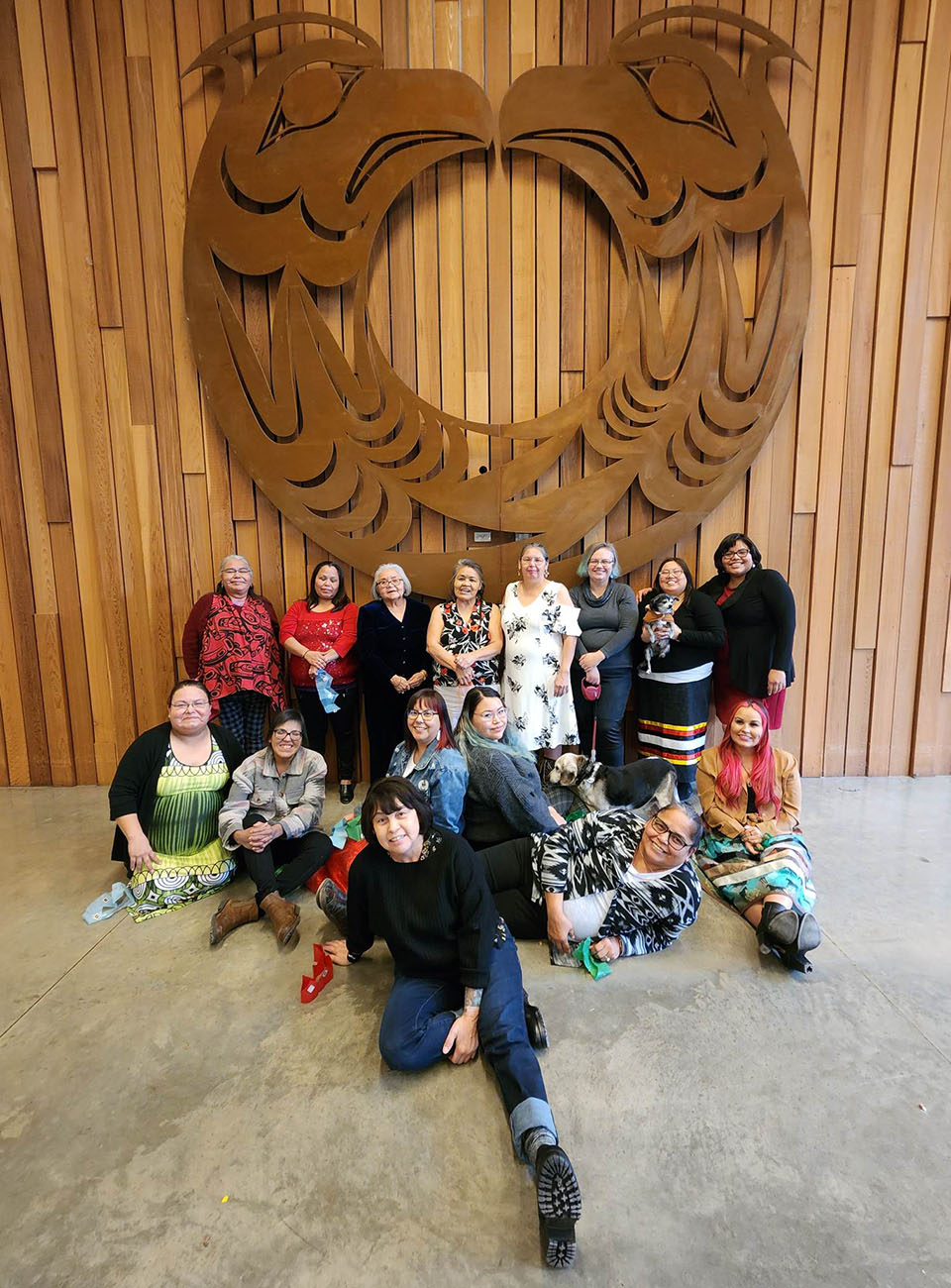
Recognizing the need for a new generation of fluent speakers, Stz’uminus Education Society approached UVic with a strong community vision of building capacity for delivering Hul’q’umi’num’ immersion programs.
As part of the 2022 cohort, 13 women have now completed the Stz’uminus Certificate in Indigenous Language Revitalization program and are now laddering into UVic’s program for the Diploma in Indigenous Language Revitalization. The end goal is the Bachelor of Education (BEDILR), and to be certified Hul’q’umi’num’ teachers.
This is one example of the strong community partnerships created through UVic’s Certificate in Indigenous Language Revitalization (CILR) program, which has been working in communities across the country for the past two decades. The award-winning and accessible CILR is offered by UVic’s Department of Linguistics and the Division of Continuing Studies, in partnership with the En'owkin Centre.
Each community brings a unique vision and context and together with UVic co-creates a customized set of courses based on the Indigenous-focused curriculum. CILR bends the program to fit the community, not the other way around.
Being a part of the kw'am'kw'um' slhunlheni learning Hul'q'umi'inum' through the Certificate in Indigenous Language Revitalization has helped me stand taller. I am healing with my ancestors as I wake up the language for myself and the future generations. They will be able to stand taller because of the work we are doing now.
—Stz’uminus CILR student
According to CILR program coordinators, most of these kw’am’kw’um slhunlheni already work in education and are passionate about reawakening Hul’q’umi’num’. They are on journeys to teach and support Hul’q’umi’num’ immersion in their communities.
By learning from and alongside Xwulmuxw instructors, with their journeys supported by the strong vision, commitment and stewardship of the Stz’uminus Education Society, they are clearing a path laid by their ancestors for Hul’q’umi’num’ speakers and learners for generations to come.
Communities map the importance of place
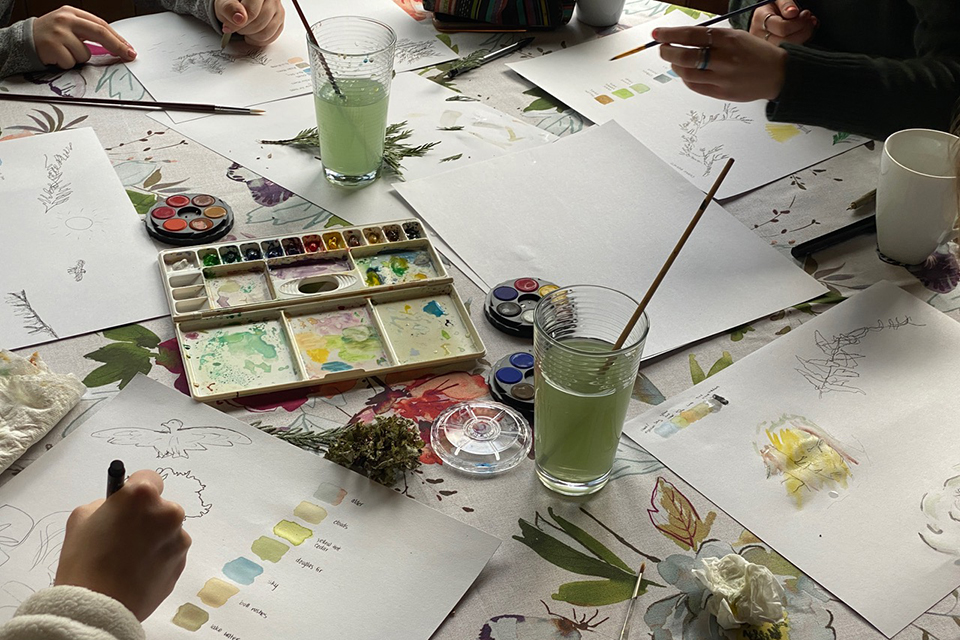
In a recent community mapping class, UVic geography students (GEOG 380) hosted over 50 SENĆOŦEN language students (Grades K-5) from the ȽÁU,WELṈEW̱ Tribal School for a field journaling and emotional mapping workshop at W̱MÍYEŦEN Mary Lake Nature Sanctuary.
Tom Sampson, a W̱SÁNEĆ Elder, spoke at the event, saying: "The more often you go back to a place, the more it reveals itself to you.”
Through a workshop on field journaling and a forest walk, the SENĆOŦEN language students expanded their knowledge of W̱MÍYEŦEN as a place of ceremony—the importance of place and language to the understanding of the land.
There isn't much space left in W̱SÁNEĆ where we can do these types of things without having interruptions or people watching, as most of the lands are not as isolated and private; so it’s important to have these places where we can be together.
—Megan Supernault or I,ÍYMELWET (pronounced “EE-EYE-MUL-WET”) in SENĆOŦEN, a student teacher in the SENĆOŦEN LENON’ET SCULÁUTW̱ (SENĆOŦEN Survival School)
“Community-based mapping enables people to capture the uniqueness of place,” describes UVic instructor Maleea Acker. “At its root, it allows for voices usually silenced to be heard.”
“It was so heart-warming hosting the young ones and adults and witnessing them express their creativity; we heard from so many of the kids that they had fun being out on the land,” adds Alice Meyers, the kinship mapping project coordinator for Mary Lake.
Community mapping is used worldwide as a hands-on, engaging, knowledge-building approach for participatory and sustainable community activism.
Learn more about UVic Map Shop
Illuminating the impacts
There are 34 distinct Indigenous languages in BC, and seven language families. Due to colonial legacies in Canada, such as Indian Hospitals, residential schools and other violent assimilationist policies, languages have been under attack as Indigenous Peoples have been separated from their traditional lands. Many see this struggle to retain and reclaim Indigenous languages as a race against time, but there is a powerful movement to take up the work of Indigenous language revitalization.
On April 3 and 4, UVic’s Department of Indigenous Education (IED) and Dr. Lorna Wanosts’a7 Williams are proud to host E₭ÁTEL - We are all connected, Global and Local Glimpses of Language Revitalization (UVic and Beyond). The organizers add: “Thank you to the W̱SÁNEĆ language champions PENÁC and SX̱EDTELISIYE for the event name!”
The event includes the premiere screening of “Illuminating Impacts of Indigenous Language Revitalization.” A cinematically rich and visually beautiful short film looking back across 10 years, it shows some of the impacts that language revitalization has had on past and current students and communities who have been involved with these programs.
The community is invited to attend the event virtually to celebrate and learn more about the language revitalization work taking place at UVic.
E₭ÁTEL takes place on both April 3 and 4 from 1 to 4 p.m. in the Ceremonial Hall of First Peoples House.
Connecting language, land and education
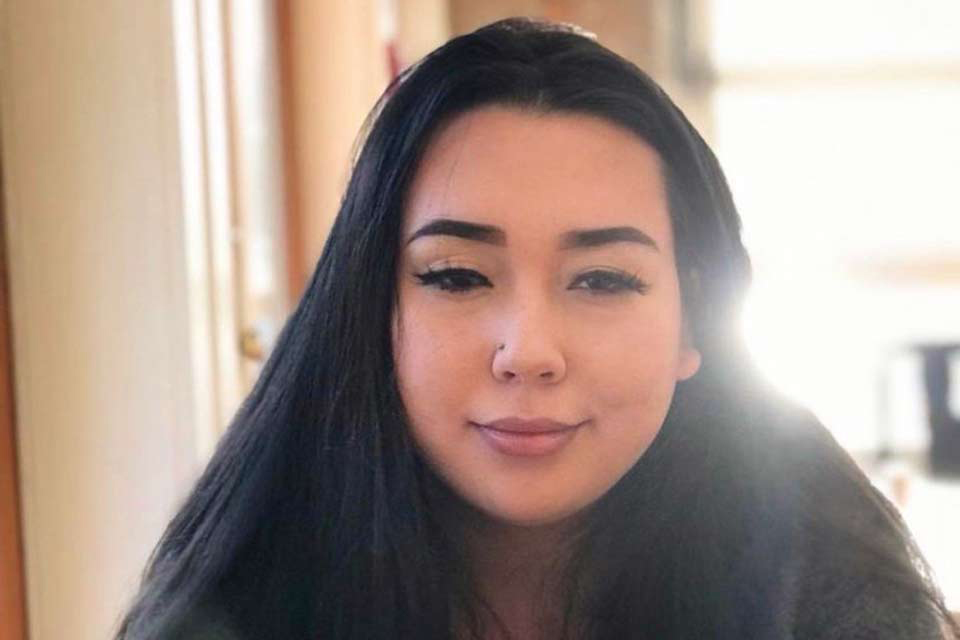
STOLȻEȽOT (pronunciation: STOL-CWETH-OT) Adelaide “Addie” Elliot graduated in November 2022 from UVic with a CILR, as part of a partnership program between UVic’s Department of Indigenous Education and the W̱SÁNEĆ school board. Both of her great grandparents were residential school survivors, and her father is a survivor of an Indian Day School.
Growing up on reserve, Elliot witnessed and heard about unremitting attempts to steal culture and language away from future generations of Indigenous Peoples. She developed a strong sense of resolve in reclaiming her identity—a birthright—through language.
I feel like I’m regaining and relearning ways of being. A lot of that is through the language. Everyone has their own ways of reclaiming identity, and learning the language is a big part of that for me.
—Indigenous language teacher STOLȻEȽOT Adelaide “Addie” Elliot, a recent UVic alumna from WJOȽEȽP community located on W̱SÁNEĆ territory
Even though Elliot grew up in an Indigenous community, she began to connect with the land in a new way once she began learning the language. Many words in SENĆOŦEN, especially place names, have reasons for why they were chosen. Learning these stories, many of which are sacred and go back thousands of years, have helped her understand her sense of self.
“Land-based learning has been a huge innovation that's been added to our learning in this program,” says Elliot. “I can see that being beneficial for students in all areas of study. Just grounding yourself through land-based learning and connecting on the community level is such a huge game changer.”
Explore the original story in UVic News
Building a dream of a centre for Inuit learning
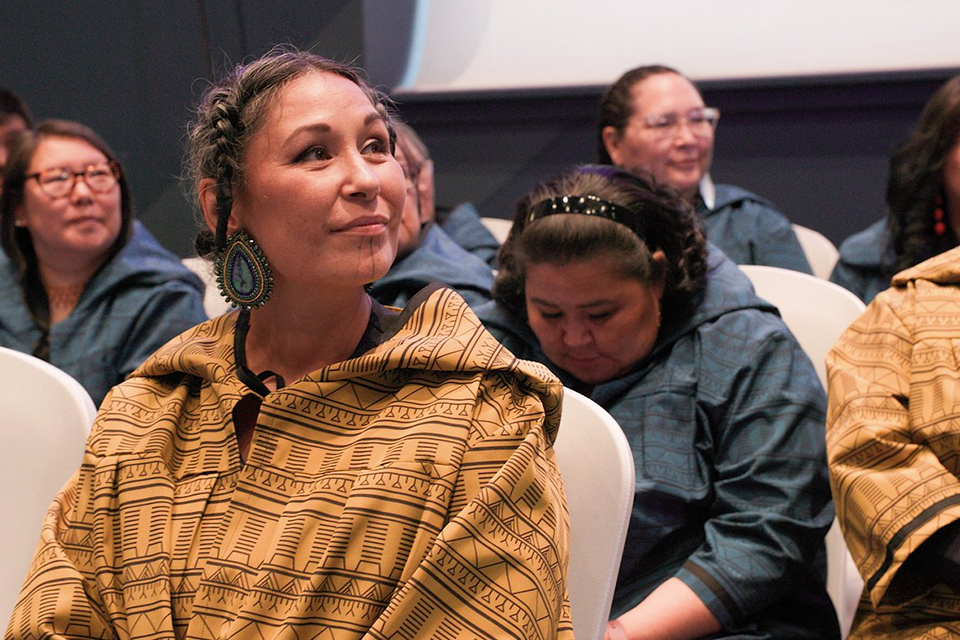
Since 2004, Leena Evic has been building her dream of a holistic centre for Inuit learning that is itself centred on Inuit language, culture and wellbeing.
Pirurvik Centre is Inuit-owned and based in Iqaluit, Nunavut, with programs built solidly on Inuit pedagogies with the purpose of helping Inuit to reclaim their connection to Inuit language, wisdom and skills. Evic’s work as co-founder and executive director of the centre had already earned her an Entrepreneurial Spirit Award, as well as a Governor General Service Cross award.
An unequivocable success story, Pirurvik Centre held its graduation ceremony in Iqaluit this past June to honour 47 UVic graduates.
For its inaugural cohort in 2020, the centre teamed up with UVic’s Division of Continuing Studies and Department of Indigenous Education to begin offering its three accredited programs: the Qimattuvik/Certificate in Indigenous Language Revitalization (for first-language Inuktut speakers); the Aurniarvik/Certificate in Indigenous Language Proficiency (for second-language learners); and the Aqqusiurvik/Diploma in Indigenous Language Revitalization (to train Inuktut language instructors).
Some of the Pirurvik/UVic graduates have stayed on at the centre to teach. One of those Inuktut instructors is renowned Inuit lawyer and activist Aaju Peter, who graduated from UVic’s CILR program in 2022 and also in 2005 from the Akitsiraq law program, the first of its kind in Canada with Inuit students earning a UVic law degree in Nunavut’s capital city of Iqaluit.
A new documentary about Peter’s life, Twice Colonized, recently premiered at the Sundance Film Festival and will soon be screening across the country. The film highlights Aaju’s lifelong fight for the rights of her people and her journey to reclaim her language and culture.
Experience a slide show of the Pirurvik grad ceremony
Building capacity in ILR at the doctoral level
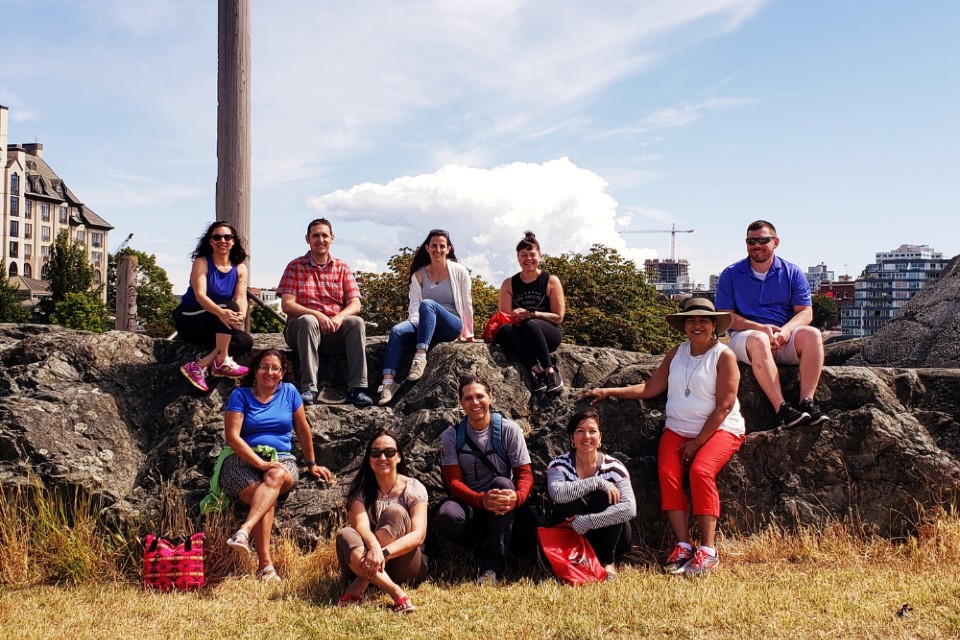
July 2019: Original cohort on decolonial walk with Songhees community member Mark Albany. (Credit: M. Albany)
In the early 2000s, Dr. Lorna Wanosts’a7 Williams, professor emerita in the Faculty of Education, began province-wide consultations to gain community input into the creation of what became the foundational programs focused on Indigenous Language Revitalization (ILR) housed in Indigenous Education at UVic.
Besides community-based undergraduate programs, a master’s program was also successfully launched in 2012. Dr. Williams retired shortly after but left us with her holistic vision of eventually expanding to a PhD program in ILR—the first of its kind in Canada.
“Building capacity at the doctoral level creates new scholars to provide leadership and innovation in their communities, in post-secondary institutions and beyond. We feel very fortunate to work with this wonderful group. They are deeply bonded and support each other when an extra boost is needed. I expect they will leave their programs not only with new ILR knowledge and research skills, but with lifelong colleagues and friends. We hope to be able to build on this pilot offering as capacity permits in the future. ay-hay, têniki, ekosani, kinanâskomitinawaw.”
— Dr. Onowa McIvor, UVic President’s Chair, Associate Professor, Indigenous Education
Together with department chair Dr. Jean-Paul Restoule and the late Dr. T’łat’laḵuł Trish Rosborough, we developed a special arrangement PhD with the first intake of students planned for the summer of 2019. We welcomed six Indigenous students and two settler students into our inaugural pilot offering, with three additional students joining in 2020.
This group spans various territories in the US and across Ontario, Saskatchewan, Alberta and BC, including Vancouver Island. They represent a diversity of ages, genders, research foci and languages. All members of the original cohort have reached candidacy and are on track to complete their research and dissertation projects in 2023 or 2024.
Written by Dr. Onowa McIvor
Indigenous language programs for everybody
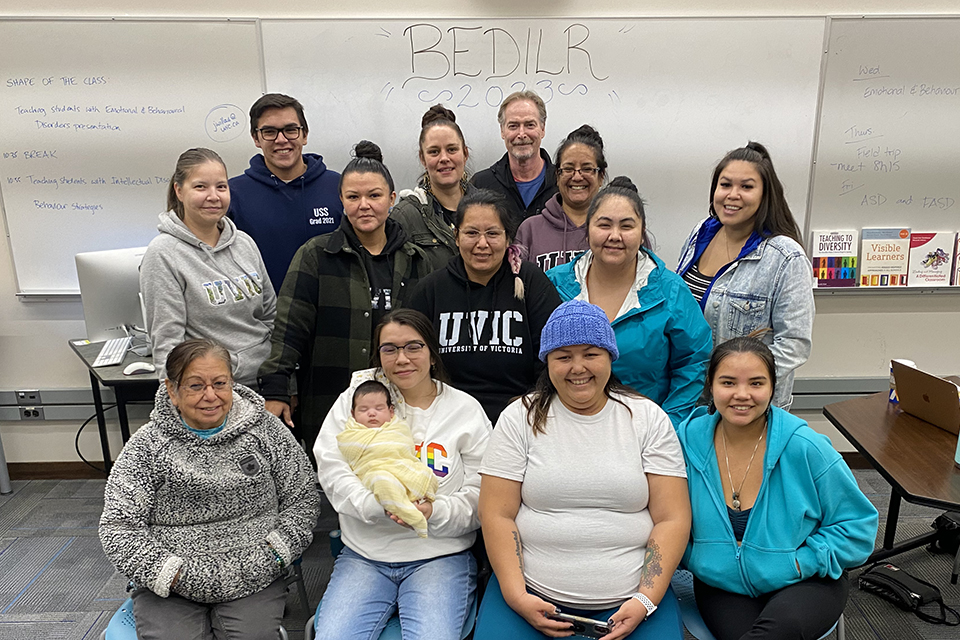
UVic offers six Indigenous Language Revitalization (ILR) programs for Indigenous and non-Indigenous students. ILR programs are offered by the Department of Indigenous Education (IED) in collaboration with the Department of Linguistics and Division of Continuing Studies, and are intended for anyone who wants to increase their understanding of Indigenous languages or their proficiency in an Indigenous language.
Classes take place on the UVic campus and in language-speaking communities.
ILR courses at UVic are offered at the undergraduate, graduate and PhD level. A certificate in Indigenous Language Proficiency is a one-year foundational program for new adult speakers, with each delivery co-designed and administered in partnership with an Indigenous community.
The Bachelor of Education in ILR is a community-based, cohort-driven program that is designed for BC Indigenous community members who want to learn their language and become teachers of their language, and would like to study in their home community.
The Graduate Certificate in ILR is meant to ensure a generation of language experts who can teach at the post-secondary level and offer support for the recovery and maintenance of Indigenous languages. The Master of Education and Master of Arts in ILR are for language scholars who plan to lead revitalization efforts in Indigenous communities and beyond.
Language and culture are inextricably linked. Language is the way in which concepts, ideas and ways of thinking get expressed in the world. There is no deeper way to learn a culture than to learn the language that is used to express the ideas and concepts that are central to that culture. For students who want to learn more about Indigenous cultures, language learning is an essential part of that.
—Ted Riecken, Chair of UVic’s Department of Indigenous Education
Register for courses and classes in IED
Theatre practices enhance language learning
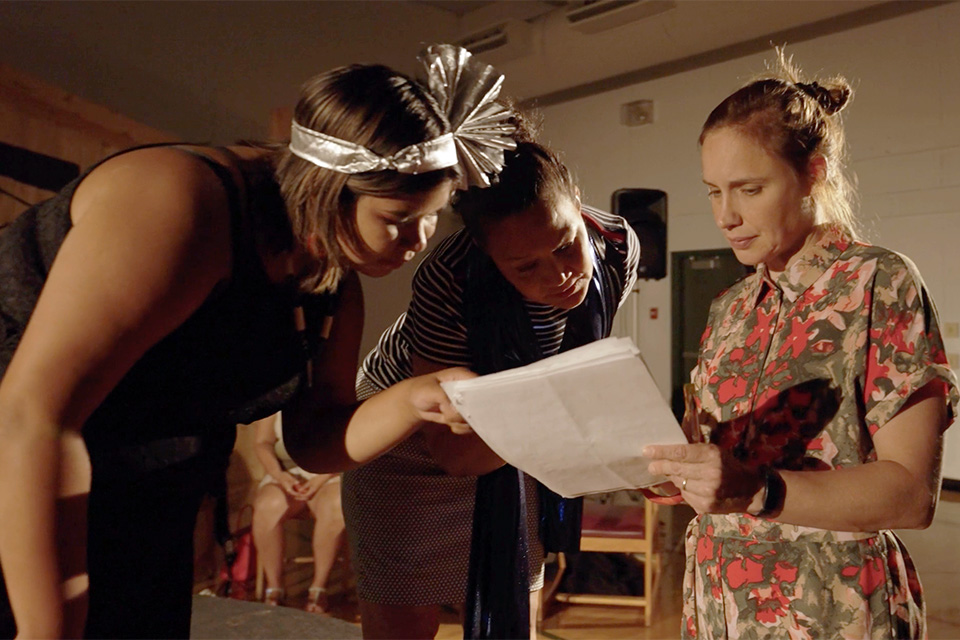
As Indigenous Elders pass, how can younger generations best learn and increase their fluency with traditional languages? UVic theatre professor Kirsten Sadeghi-Yekta believes applied theatre techniques can be an important part of the language-learning equation.
Working in collaboration with the Hul’q’umi’num’ Language & Culture Society, Hul’q’umi’num’ Language Academy and other university partners, Sadeghi-Yekta of UVic’s Department of Theatre has been engaged with this project since 2015.
Her work has been supported by a number of grants from the Social Sciences and Humanities Research Council, including a three-year Partnership Development Grant with UVic’s Sonya Bird (see below) as co-lead.
Hul’q’umi’num’ was traditionally spoken across a wide area of the Pacific Northwest, but Sadeghi-Yekta estimates there are now less than 30 fluent speakers.
Language revitalization is the most important thing. We’re fighting for our language—we don’t accept it to be extinct—so we’re organizing and preserving and revitalizing with the younger generation.
—Hul’q’umi’num’ speaker and Cowichan Tribes member Tara I. Morris, a PhD candidate in theatre and linguistics who has been involved with the project in a variety of roles since 2019
A powerful demonstration of how performance can effectively augment classroom education was showcased at UVic’s Reawakening Language on Stage Indigenous theatre festival in September 2022.
“We’re hoping to offer a spark for people to see that it’s possible to learn traditional languages through alternative ways—it doesn’t only have to be in classrooms,” adds Sadeghi-Yekta.
Explore the original story in UVic News
Keeping Coast Salish languages strong
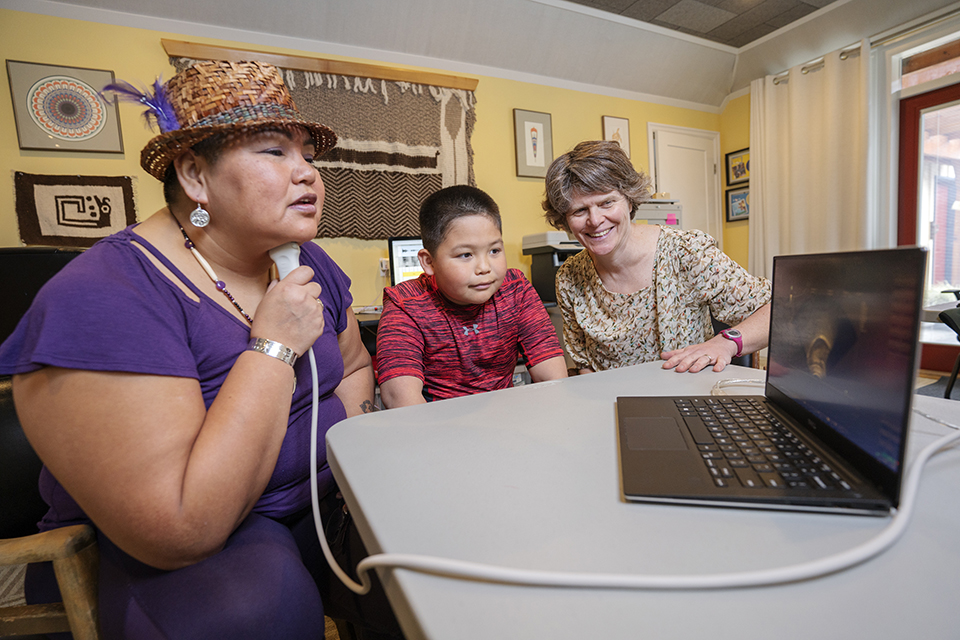
With few first-language speakers of the Hul’q’umi’num’ language remaining, the Hul’q’umi’num’ Language & Culture Society is collaborating with UVic linguists to transmit knowledge of their unique Coast Salish language to younger generations.
Since 2018, UVic linguistics professor Sonya Bird has led a team of researchers using ultrasound, acoustic speech analysis and palatography technologies to hone Hul’q’umi’num’ learners’ pronunciation and improve their fluency in the language.
Bird says that Hul’q’umi’num’ is an incredibly complex and rich language, with 37 consonants—21 of which don’t occur in English.
Her team is now examining the development of pronunciation among children who are participating in the early Hul’q’umi’num’ language programs to set benchmarks for educators to assess the development of future learners. They have also developed specialized tools, like these listening quizzes, to help learners practice their listening skills and to help instructors determine what sounds and contrasts are hardest for learners to acquire.
Bird says the students in the program are aware they have limited time to learn from Elders, and that the responsibility of carrying the language forward has fallen on them.
Agnes Violet Sharon Seymour’s desire to learn Hul'q'umi'num' stretches back to when she was a girl, listening to her father and uncle talk in the Coast Salish language, and she wants that same generational bond for her son. Seymour, from Kwa'mutsun, a member of Quw'utsun' tribe, took science of speech classes. She hones her pronunciation and when her son returns home from school, they speak to each other in Hul’q’umi’num’.
My goal is to keep our Hul’q’umi’num’ strong.
—Kwa’mutsun community member Violet Sharon Seymour
Explore the original story in UVic News
Find out more
- UN International Decade of Indigenous Languages (2022-2032)
- 2022 Report on the Status of BC First Nations Languages
- Indigenous Language Revitalization at UVic
- ILR Programs in Indigenous Education
- CILR Program in Continuing Studies
Photos
In this story
Keywords: Indigenous, languages and linguistics, community, reconciliation, international
People: Robina Thomas, Lorna Williams, Belinda Daniels, Stz’uminus, En'owkin Centre, Maleea Acker, Addie Elliott, Pirurvik Centre, Aaju Peter, Leena Evic, Ted Riecken, Kirsten Sadeghi-Yekta, Tara Morris, Sonya Bird, Kirsten Sadeghi-Yekta, Agnes Seymour, Onowa McIvor

